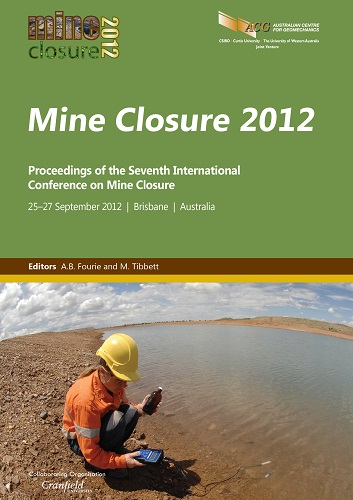Case study – learning from an active deconstruction project

|
Authors: Nelson, J Paper is not available for download Contact Us |
DOI https://doi.org/10.36487/ACG_rep/1208_28_Nelson
Cite As:
Nelson, J 2012, 'Case study – learning from an active deconstruction project', in AB Fourie & M Tibbett (eds), Mine Closure 2012: Proceedings of the Seventh International Conference on Mine Closure, Australian Centre for Geomechanics, Perth, pp. 305-316, https://doi.org/10.36487/ACG_rep/1208_28_Nelson
Abstract:
In support of its expanding iron ore mining, rail and shipping operations in the Pilbara, Rio Tinto Iron Ore (RT iron ore) owns and manages a rapidly expanding power network. After 40 years of operation, the Cape Lambert and Dampier power stations have met the end of their operating life and require deconstruction. The removal of this infrastructure will ensure that valuable industrial land is available for future expansion projects and reduce potential future liabilities of the sites. The planning process for a deconstruction project can easily overlook significant items that affect the financial commitment required and the schedule for the deconstruction works. The costs of facilities decommissioning and remediation are often overshadowed in mine closures but are significant and challenging for large complex infrastructure projects. Risks to deconstruction costs and project delays can arise from poor communication and when the distribution of responsibilities amongst stakeholders is poorly defined. Sources of additional cost and project delays can include a lack of clarity or agreement of the criteria for deconstruction (such as the depth of foundation and service removal), unforeseen requirements to maintain or modify existing services, additional decommissioning support, hazardous material disposal, environmental studies to support approvals and potential soil and water contamination management costs. This paper presents a case study of the project to deconstruct two of RT iron ore’s power stations, including lessons learned from the project that can be applied for use in planning other major facility deconstruction projects and for the development and maintenance of site closure plans.
References:
DITR (2006) Department of Industry Tourism and Resources. Leading Practice Sustainable Development Program for the Mining Industry: Mine Closure and Completion, Commonwealth of Australia.
Index Mundi (2012) Five Year Iron Ore Monthly Price – Australian Dollar per Dry Metric Ton 2007–2012, viewed 21 May 2012, .
Macdonald, K. (2010) Kwinana power station ‘riddled’ with asbestos, The West Australian, March 24, viewed 7 July 2012, .
RT iron ore (2007) Dampier Port Operations Closure Planning Study - Closure Management Plan, Internal Publication.
Worksafe (2011) State of the Work Environment Work-related Fatalities Report 2006–2007 to 2010–2011, Western Australia Government, Department of Commerce, September 2011.
Yates, A. (2000) Technical expertise as a contributing factor in three disasters, Australian Journal of Emergency Management, Volume 15, Issue 3, August 2000.
© Copyright 2024, Australian Centre for Geomechanics (ACG), The University of Western Australia. All rights reserved.
View copyright/legal information
Please direct any queries or error reports to repository-acg@uwa.edu.au
View copyright/legal information
Please direct any queries or error reports to repository-acg@uwa.edu.au